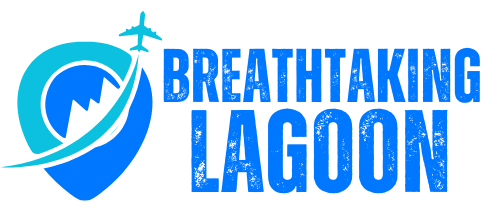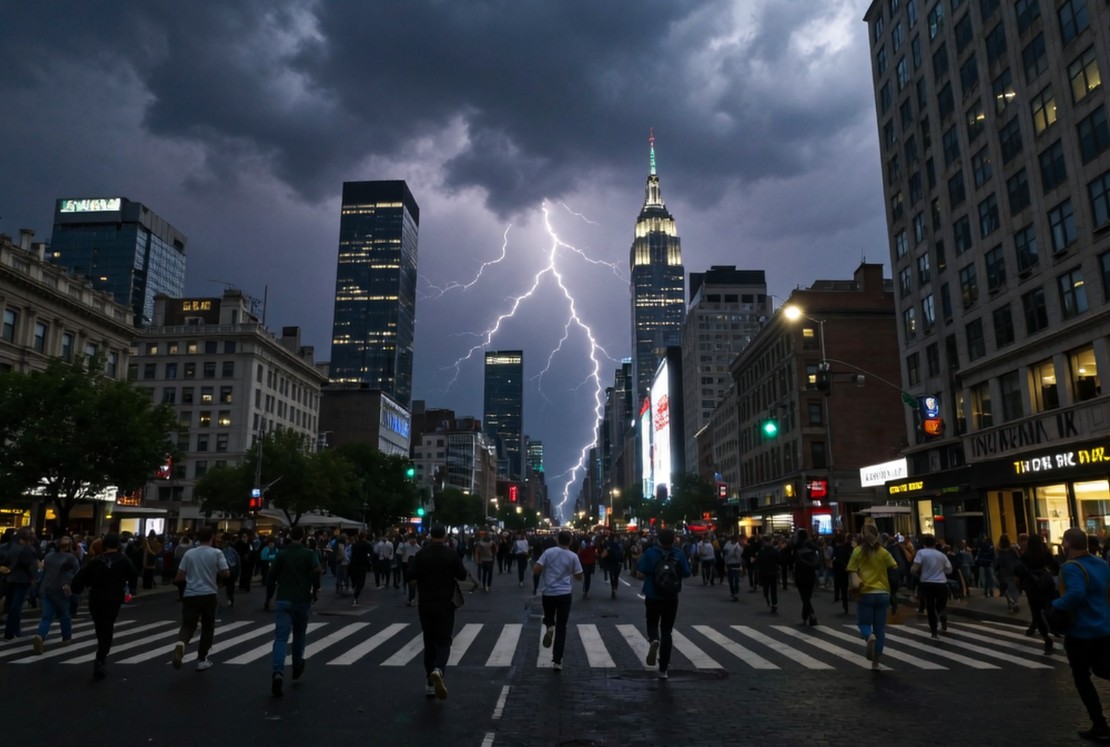Published on October 28, 2025
The US tourism industry entered 2025 facing a convergence of crises. Hurricane Helene battered Florida’s coast at the end of the 2024 hurricane season and the first months of 2025 brought Hurricane Melissa, Tropical Storm Chantal and other storms that disrupted flights, damaged infrastructure and frightened visitors[1]. These events coincided with a divisive federal government shutdown and an ongoing trade war marked by Trump-era tariffs and a new visa fee. Together, these shocks shook traveler confidence, increased costs and led to notable declines in tourism across major destinations such as Miami, New York, Tampa and Houston. The fallout was felt well beyond these cities: border states like North Dakota watched Canadian visitors stay away, Las Vegas hotels struggled with empty rooms and rural communities near national parks feared economic ruin. This article examines verified facts and statistics from 2025 to explain how storms, politics and tariffs combined to create a “perfect storm” for the U.S. tourism economy.
2025’s record-breaking hurricane season
The 2025 Atlantic hurricane season was one of the most intense on record. By late October the season had produced three Category 5 hurricanes — Melissa, Erin and Humberto — only the second time in recorded history that three storms of this strength occurred in a single season[2]. Tropical Storm Chantal formed in early July and produced winds of 60 mph and more than 10 inches of rain across the Carolinas, causing flash flooding, six fatalities and an estimated US$500 million in damage[3]. Earlier, Hurricane Helene in October 2024 had forced mass evacuations in Florida, closed airports and roads, and damaged resorts; Florida’s tourism industry estimated losses exceeding US$600 million, adding to more than US$1.2 billion in damages from prior storms[1]. By mid‑2025 parts of the Florida panhandle and North Carolina’s Blue Ridge Parkway were still recovering from Helene, with businesses operating under tents and visitor numbers slow to return[4].
Advertisement
Storms slam air travel and hotels
Advertisement
Hurricanes and tropical storms disrupted air travel on an unprecedented scale. Hurricane Melissa and Tropical Storm Chantal forced flight delays and cancellations at major airports like Miami International, Charlotte Douglas and Orlando[5]. Airlines such as American, United and Spirit experienced delays ranging from 20 % to 45 % on the worst days[6]. Miami’s hotel industry, which had benefited from major events like Art Basel in 2024, saw average daily rates (ADR) plummet 27.2 % to US$178.62 and revenue per available room (RevPAR) drop 32.7 % to US$120.96 in October 2025[7]. Industry analysts attributed this decline to fewer major events, fewer international visitors from Canada and Europe and lingering storm impacts[8]. In Houston, which had been battered by Hurricane Beryl in July 2024, hotel occupancy fell 5.6 % to 55.6 %, while ADR dropped 2.3 %[7]. These figures underscore how storm-related disruptions suppressed demand long after skies cleared.
Florida: heavy weather meets tourism dependence
Florida’s economy depends heavily on tourism, so storms took a particularly harsh toll. Florida welcomed approximately 17.7 million tourists during the first part of 2025, an 8.7 % decline from the same period in 2024 when 19.4 million visited[9]. The state’s tourism authority reported that hurricanes damaged infrastructure and forced large numbers of flight cancellations, stranding travellers and depressing bookings[5]. Yet state data also revealed a complex picture: overseas visitors to Florida in the second quarter of 2025 increased 11.4 % to 2.295 million, but Canadian visitors plunged 20 % to 640 000[10]. Domestic travellers still accounted for 91.5 % of total visitors[11], partially cushioning the blow.
The government shutdown: chaos at airports and parks
On October 1 2025, a political impasse led to a partial shutdown of the U.S. federal government that lasted weeks. Essential workers such as air traffic controllers and Transportation Security Administration (TSA) officers continued to report for duty but without pay. As the shutdown stretched on, 11 000 Federal Aviation Administration employees were furloughed and 13 000 air traffic controllers worked without compensation[12]. More than 64 000 TSA officers screened passengers without pay, causing morale problems and absenteeism[13]. Wait times at major airports such as Los Angeles International and Washington Dulles grew as fewer staff managed rising passenger volumes[14]. The U.S. Travel Association estimated the shutdown drained US$1 billion from the travel economy every week[15], while the hotel industry alone lost US$650 million and US$31 million per day in hotel activity[16].
National parks and cultural icons shuttered
The shutdown rippled beyond airports. National parks and monuments closed visitor centres and suspended services[17]. Analysts warned of US$80 million in visitor spending losses every day and noted that the 16‑day shutdown in 2013 had cost gateway communities more than US$400 million[17]. Smithsonian museums and the National Zoo exhausted reserve funds and prepared to close[18]. Communities near parks in Montana, Utah and Wyoming faced immediate cancellation of bookings; each day of closure threatened to wipe out months of seasonal revenue[19]. The shutdown vividly demonstrated tourism’s dependence on federal services: open parks, functioning airports and paid staff are prerequisites for visitor confidence[20].
Advertisement
Tariffs and visa fees: the economic storm
Advertisement
Even before storms and shutdowns, U.S. tourism was weathering the Trump administration’s trade war. In 2025 the government imposed tariffs of 35 % on most imports from Canada and 25 % on goods from Mexico and China[21]. These measures, alongside political rhetoric—including suggestions that Canada become the 51st state—sparked boycotts and shifted travel patterns. According to the North Dakota Department of Commerce, border crossings from Canada into North Dakota were down 30 % in the first half of 2025; Canadian visitors spent US$14.4 million less than during the same period in 2024[22]. A Longwoods International survey of 1 000 Canadian adults found 63 % said U.S. policy and politics made them less likely to visit, 80 % blamed tariffs and 71 % felt rhetoric created a less welcoming environment[23]. In addition to tariffs, the Trump administration introduced a US$250 “visa integrity fee” in October 2025, raising visa costs to about US$442 and further discouraging travellers[24]. The World Travel & Tourism Council projected that the fee could cost the U.S. US$25–29 billion in lost international visitor spending in 2025[25].
National impact
Tourism Economics initially forecast a 9 % increase in international arrivals for 2025, but by mid‑year it projected an 8.2 % decline[26]. The U.S. would be the only country among 184 studied where foreign visitor spending would fall, with spending expected to drop US$12.5 billion[24]. The same analysis noted that total tourism revenue projections fell from US$184 billion to US$169 billion[27]. The U.S. Travel Association similarly warned that inbound visits could decline 6.3 %, from 72.4 million in 2024 to 67.9 million in 2025, costing about US$1 billion per week during the shutdown[28]. This “Trump slump” manifested in multiple markets: overseas visitors from Western Europe fell 10 %–12 %, travellers from India dipped 5 %, and global arrivals were down 3 % in July and 2.9 % in August[29]. Major airlines and hotel chains reported occupancy declines of up to 25 % in hurricane-affected regions[5].
City and state case studies
Miami, Florida
Miami is both a gateway for Latin American travel and a global events destination. Hurricane Helene (2024) and subsequent storms inflicted billions in damages, closing airports and delaying tens of thousands of flights[1]. Despite record events in 2024, Miami’s hotel metrics collapsed in 2025: ADR fell 27.2 % and RevPAR dropped 32.7 %[7]. The slump was attributed to fewer international visitors, fewer large-scale conventions and lingering storm impacts[8]. The statewide decline in visitors (an 8.7 % drop) further reduced Miami’s pool of potential domestic tourists[9].
However, the story isn’t uniformly bleak. Second‑quarter data showed overseas visitors to Florida grew 11.4 %, with particularly strong gains from Brazil[30]. Miami’s tourism board has launched marketing campaigns emphasising resilience and safety, and the upcoming 2026 FIFA World Cup (with matches in Miami) is expected to bring a surge of visitors and investment.
Tampa and the Gulf Coast
Tampa Bay’s tourism economy leans heavily on beaches, cruise ports and sport events. When Hurricane Melissa approached Florida in October 2025, the storm combined with the government shutdown to produce flight delays and cancellations at Tampa International Airport[6]. Visitor numbers across Florida’s Gulf Coast were further pressured by the decline in Canadian tourists. Visit Florida estimated that Canadian visitors comprised only 1.9 % of second‑quarter travellers—down from 3.11 % in 2019—and that the 20 % drop in Canadian visitors offset gains from other markets[10]. Local businesses noted fewer European bookings and a weakening British pound. Nevertheless, Florida overall still logged a record 34.435 million visitors in the second quarter[31], suggesting domestic travellers filled some gaps.
New York City
New York City remains the most visited city in the United States, but 2025 tested its resilience. Visitor forecasts predicted roughly 64.1 million total visitors, compared with 67 million in 2024, and international arrivals were expected to drop 17 % to 12.1 million[32]. Higher prices due to tariffs and inflation—coffee prices reportedly jumped from US$3 to US$5—combined with visa delays that stretched 400 days to discourage travellers[33]. New York’s tourism industry estimated it could lose up to US$6 billion in visitor spending and that 400 000 jobs were at risk[32]. The city also experienced a 26 % decline in tour requests and a 39 % drop in European bookings in early 2025[32].
New York’s recovery strategy focuses on major events and infrastructure improvements. The 2026 FIFA World Cup will host matches at MetLife Stadium, and economists expect the New York–New Jersey region to gain US$3.3 billion, attract 500 000 visitors and create 10 000 jobs[34]. Marketing campaigns such as “Where the World Comes to Play” and proposed tariff‑free travel packages aim to attract international visitors[35].
Houston, Texas
Houston, home to NASA and a thriving energy sector, had record tourism numbers in 2024 but saw a slowdown in 2025. International arrivals through February were down 5 % compared with 2024, with Hobby Airport recording a 15.7 % decline and George Bush Intercontinental (IAH) down 4.2 %[36]. Senior VP of Tourism Jorge Franz noted that 2024 brought the “most visitors ever” (around 54 million), but 2025 showed a “mixed bag”[37]. Future hotel bookings from Canada and Europe declined, and 73 000 fewer Mexican visitors arrived between January and February[38]. Analysts blamed the drop on Trump’s rhetoric about immigration and tariffs[39]. On the positive side, travel from India increased, and Houston opened a marketing office in the UK to diversify sources[40]. Still, the slump contributed to a decline in hotel occupancy and revenue across Houston[7].
Las Vegas and Nevada
Las Vegas, a tourism powerhouse, illustrates how tariffs and rhetoric can deter visitors. In August 2025 the Nevada Independent reported that Las Vegas welcomed just under 3.1 million tourists in June, an 11 % drop compared with June 2024[41]. International visitors were down 13 % and hotel occupancy fell roughly 15 %, according to the Las Vegas Convention and Visitors Authority[41]. Mayor Shelley Berkley said tourism from Canada—Nevada’s largest international market—had dried from a torrent “to a drip,” and high rollers from Mexico were staying away[41]. Union leader Ted Pappageorge called it the “Trump slump,” citing the impact of tariffs and immigration crackdowns on visitors from Southern California and Latin America[42]. Las Vegas casinos attempted to boost domestic marketing, but summer earnings calls showed that major operators were relying on revenue from other domestic markets to offset declines[42].
North Dakota and the northern border
Northern border states that rely on Canadian tourism experienced some of the most dramatic declines. Border crossings into North Dakota were down about 30 % in the first half of 2025, leading to an estimated US$14.4 million drop in spending by Canadian visitors[22]. A survey of Canadian adults found that 63 % were less likely to visit the U.S. due to policy and politics, with 80 % citing tariffs and 71 % citing unwelcoming rhetoric[23]. Hotel occupancy and visits to Theodore Roosevelt National Park also fell compared with 2023 and 2024[43]. The state sought to reassure Canadians and emphasised the continuity of cross‑border friendships, even hosting handshake events at the International Peace Garden[44]. Nevertheless, the data underscores how federal policies can quickly ripple through local economies.
Other states feeling the heat
Travel industry reports cited declines across a wide swath of states. According to travel analytics compiled by Travel and Tour World, several states experienced sharp drops in 2025: Colorado’s tourism fell by 40 %, Hawaii declined 5.56 %, Idaho down 7.28 %, Mississippi down 17.9 %, Nevada down 11.3 %, Vermont down 28.69 %, New York down 10.53 % (August data) and Texas down 5 %[45]. Kentucky, Michigan, Illinois and New Mexico also recorded declines[9]. These numbers were partly attributed to higher travel costs, economic uncertainty and the broader political climate.
Sector‑by‑sector impacts
Airlines and airports
Airlines faced mounting losses as storms and shutdowns disrupted operations and reduced demand. Delays at major airports reached up to 45 % for some carriers[6]. Flight cancellations due to hurricanes forced airlines to reroute planes and issue refunds[5]. With fewer international passengers, airlines also faced lower yields on trans‑Atlantic and trans‑Pacific routes. Some carriers cut service to the U.S., while domestic airlines looked to other markets for growth.[46] The government shutdown exacerbated these challenges by reducing staffing at the FAA and TSA[47].
Hotels and hospitality
Hotel occupancy and revenue declined across many states. In Miami, occupancy fell more than 30 %, while in Houston it declined 5.6 %[7]. Las Vegas hotels saw a 15 % drop in occupancy[41]. New York City braced for a potential US$4 billion hit to local tourism and job losses in hospitality[33]. The shutdown alone caused a US$650 million loss in hotel business nationwide[16]. Many hotels offered discounts and flexible cancellation policies to lure domestic travellers, but the loss of high‑spending international guests hurt profitability.
Small businesses and local economies
Beyond large cities, small towns and rural communities dependent on tourism suffered acutely. Gateway communities around national parks lost millions in daily spending as parks closed[17]. In Florida’s Big Bend region, restaurants like Caddy’s operated under tents because storm damage displaced workers and visitors[4]. In North Dakota, souvenir shops and hotels near the border experienced fewer bookings[43]. Sault Ste. Marie in Michigan saw business dry up because Canadian visitors were deterred by tariffs and politics, highlighting how cross‑border communities are intertwined[48].
Looking ahead: resilience and recovery
Despite the turbulence of 2025, there are signs of resilience and potential for recovery:
- Infrastructure improvements: Many airports and ports used the lull in traffic to accelerate upgrades. Miami International is expanding terminals and installing flood‑resistant infrastructure. Houston is investing in security modernization and marketing to new markets like India[40].
- Major events: The 2026 FIFA World Cup is expected to bring US$3.3 billion to the New York–New Jersey region and generate 10 000 jobs[34]. Miami and Houston will also host matches, promising a surge in international visitors and improved infrastructure.
- Policy adjustments: Travel industry leaders are lobbying for visa and tariff relief. Some policymakers have floated suspending the US$250 visa fee, and there is growing bipartisan concern about the economic fallout of prolonged shutdowns.
- Marketing campaigns: Cities and states are launching campaigns emphasising hospitality and value. New York’s “Where the World Comes to Play” highlights culture and entertainment[35]. Florida is courting Brazilian and Indian visitors[30]. North Dakota focuses on cross‑border friendship events to reassure Canadians[44].
Conclusion
The year 2025 underscored the fragility of the U.S. tourism industry in the face of multiple shocks. Storms like Hurricanes Helene, Melissa and Tropical Storm Chantal damaged infrastructure and frightened visitors. A government shutdown shuttered parks, slowed air travel and cost the industry billions. At the same time, a tariff‑driven trade war and the introduction of a US$250 visa fee raised the cost of visiting the United States and discouraged travellers, particularly from Canada, Mexico and China. Together these factors produced measurable declines: Florida’s tourist arrivals fell 8.7 %, Las Vegas saw an 11 % drop in visitors and national inbound travel was projected to decline 6.3 % to 67.9 million[28]. Yet the picture was nuanced; domestic tourism remained robust in many regions, overseas visitors from countries like Brazil increased, and upcoming events such as the 2026 FIFA World Cup offer hope for recovery. The experience of 2025 provides hard‑earned lessons: diversify source markets, invest in resilient infrastructure and avoid policies that make visitors feel unwelcome. For the U.S. to regain its place atop the global travel hierarchy, it must weather political storms as deftly as it does hurricanes.
Advertisement
Tags: Houston, Miami, New York, Tampa, Trade Tariff
Advertisement
Tags: Houston, Miami, New York, Tampa, Trade Tariff
Subscribe to our Newsletters
I want to receive travel news and trade event updates from Travel And Tour World. I have read Travel And Tour World's Privacy Notice .
Tuesday, October 28, 2025
Tuesday, October 28, 2025
Tuesday, October 28, 2025
Tuesday, October 28, 2025
Tuesday, October 28, 2025
Tuesday, October 28, 2025
Tuesday, October 28, 2025
Tuesday, October 28, 2025




